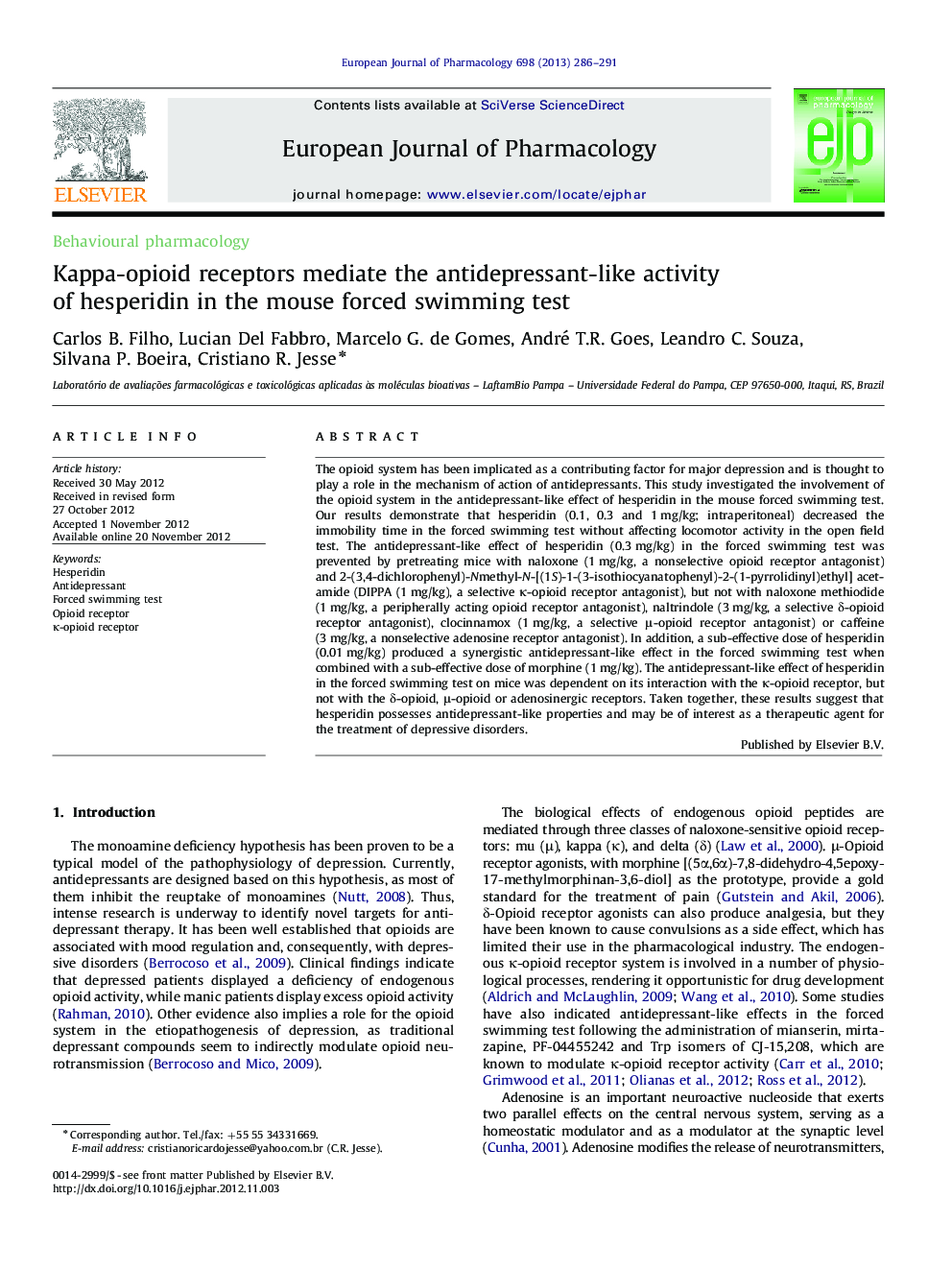| Article ID | Journal | Published Year | Pages | File Type |
|---|---|---|---|---|
| 5828975 | European Journal of Pharmacology | 2013 | 6 Pages |
Abstract
The opioid system has been implicated as a contributing factor for major depression and is thought to play a role in the mechanism of action of antidepressants. This study investigated the involvement of the opioid system in the antidepressant-like effect of hesperidin in the mouse forced swimming test. Our results demonstrate that hesperidin (0.1, 0.3 and 1 mg/kg; intraperitoneal) decreased the immobility time in the forced swimming test without affecting locomotor activity in the open field test. The antidepressant-like effect of hesperidin (0.3 mg/kg) in the forced swimming test was prevented by pretreating mice with naloxone (1 mg/kg, a nonselective opioid receptor antagonist) and 2-(3,4-dichlorophenyl)-Nmethyl-N-[(1S)-1-(3-isothiocyanatophenyl)-2-(1-pyrrolidinyl)ethyl] acetamide (DIPPA (1 mg/kg), a selective κ-opioid receptor antagonist), but not with naloxone methiodide (1 mg/kg, a peripherally acting opioid receptor antagonist), naltrindole (3 mg/kg, a selective δ-opioid receptor antagonist), clocinnamox (1 mg/kg, a selective μ-opioid receptor antagonist) or caffeine (3 mg/kg, a nonselective adenosine receptor antagonist). In addition, a sub-effective dose of hesperidin (0.01 mg/kg) produced a synergistic antidepressant-like effect in the forced swimming test when combined with a sub-effective dose of morphine (1 mg/kg). The antidepressant-like effect of hesperidin in the forced swimming test on mice was dependent on its interaction with the κ-opioid receptor, but not with the δ-opioid, μ-opioid or adenosinergic receptors. Taken together, these results suggest that hesperidin possesses antidepressant-like properties and may be of interest as a therapeutic agent for the treatment of depressive disorders.
Related Topics
Life Sciences
Neuroscience
Cellular and Molecular Neuroscience
Authors
Carlos B. Filho, Lucian Del Fabbro, Marcelo G. de Gomes, André T.R. Goes, Leandro C. Souza, Silvana P. Boeira, Cristiano R. Jesse,
